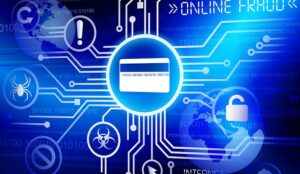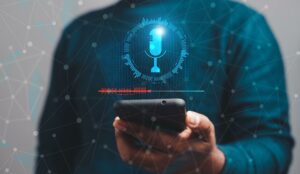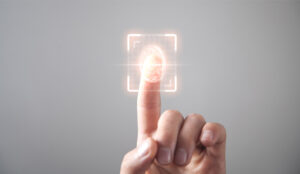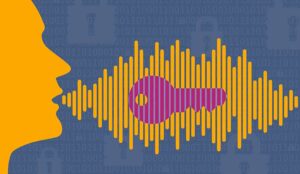Amiram Pinto of NICE discusses the varying types of contact centre biometrics, after underlining the benefits of using biometrics for authentication.
Contact centres regularly deal with highly confidential information such as payment card numbers, Social Security numbers, and other sensitive data.
A single breach of that information can spell disaster, instantly damaging the trustworthiness of any organization, even if they have a stellar reputation and pristine history.
History has shown – along with recent news headlines – that passwords, ID numbers or PINs are not safe, and definitely not sufficient as a standalone authentication factor. No matter how complex we make our passwords, there is still a need for additional layers of security. That is what makes biometrics so popular.
From accessing our mobile devices, through opening our office door, to accessing our bank account or talking to a contact centre agent, we see more day-to-day applications for biometrics as a means of authentication.
Biometric-based authentication is more secure than any other method and ties an identity to a specific individual rather than a password or a code that could be used by anyone.
Why Use Biometrics for Authentication
Every human being possesses certain unique features in terms of both physical and behavioral characteristics that are different from everybody else on the planet.
The first and most common thing that comes to mind when speaking of unique features is the fingerprint, which is a physical characteristic.
But there are other characteristics that are more of behavioral in nature, like the way we speak, the way we type on a keyboard, the way we write our signature, and several others.
Together, these sets of characteristics are used to identify an individual with a reasonable level of confidence, and can dramatically improve the level of security.
Think about it for a second: passwords, PINs, smart keys, smart cards and the like are widely used forms of authentication, but have limitations and vulnerabilities.
For instance, passwords and PINs can be easily forgotten, hard to remember, or stolen. Smart keys can be easily lost or duplicated. Smart cards with magnetic strips can be forged.
But a person’s biometrics or biological traits cannot be stolen, forgotten, or misplaced. As a result, they provide a much more secure and reliable way to authenticate an individual when compared to the traditional methods.
How We Read All Types of Biometrics
To put biometrics to use, they need to be converted to a format that is readable by an authentication system. That task is accomplished by using a biometric sensor.
A biometric sensor is a device that changes the biometric trait of a person into a digital image. In general terms, the sensor reads or measures light, temperature, speed, electrical capacity, and other types of energy.
That data is converted into an electric signal that is then read by the authentication system to verify a person’s identity.
If you’ve ever used your fingerprint or face recognition to unlock your smartphone, you’ve interacted with a biometric sensor.
So What Different Types of Biometrics Are There?
While it is evident biometric authentication provides a clear advantage over traditional methods, some confusion still exists about which types of biometrics organizations should use.
1. Fingerprint
Fingerprint recognition is widely considered to be one the oldest and most developed types of biometric recognition.
Fingerprints are easy to capture, and can verified by comparing the unique loops, arches, and whorls in each pattern.
After capturing the print, sophisticated algorithms use the image to produce a unique digital biometric template.
The template is then compared to new or existing scans to either confirm or deny a match.
2. Facial Recognition
Facial recognition software measures the geometry of the face, including the distance between the eyes, the distance from the chin to the forehead, and multiple other points on a person’s face.
After collecting the data, an advanced algorithm transforms it into an encrypted facial signature.
3. Voice Recognition
Physically speaking, the shape of a person’s vocal tract, including the nose, mouth, and larynx, determines the sound produced.
Behaviorally, the way a person says something – movement variations, tone, pace, accent, and so on – is also unique to each individual.
The most important properties used for speech authentication are nasal tone, fundamental frequency, inflection, cadence.
Combining data from both physical and behavioral biometrics creates a precise voiceprint.
4. Iris Recognition
In the human eye, the iris is the colored portion in the shape of a ring. If you look closely, you will find it is made of many asymmetric thick thread-like structures.
These thread-like structures are the muscles that help adjust shape of the pupil and only allow appropriate amount of light in the eye.
By measuring the unique folds of these muscles, biometric authentication tools can confirm identity with incredible accuracy.
Liveness detection – like requiring a user to blink for the scan – adds an additional layer of accuracy and security.
5. Retina Scan
Retinal scans capture capillaries deep within the eye by using unique near-infrared cameras. The raw image is first preprocessed to enhance the image then processed again as a biometric template to use during both enrollment and verification.
6. Keystroke Dynamics
Keystroke dynamics leverage the fact that people follow a definite pattern while typing on a keyboard or keypad. Their keystroke rhythm can be used to establish a biometric profile, which can be used to identify or authenticate him/her.
Time taken to press each key, pause between key presses, letters typed per second/minute, and several other measures are taken to generate a keystroke profile of a user.
When added with keystroke dynamics, password-based security can improve multifold without introducing any more complexity.
7. Signature Recognition
Signature recognition is one type of biometric method used to analyze the physical activity of signing by measuring special coordinates such as pen pressure, stroke order, inclination, and speed.
Measurements are digitally recorded, then that information is used to automatically create a biometric profile for future authentication.
This blog post has been re-published by kind permission of NiCE-ltd – View the Original Article
For more information about NiCE-ltd - visit the NiCE-ltd Website
Call Centre Helper is not responsible for the content of these guest blog posts. The opinions expressed in this article are those of the author, and do not necessarily reflect those of Call Centre Helper.
Author: NiCE-ltd
Published On: 18th Nov 2019 - Last modified: 20th Nov 2019
Read more about - Guest Blogs, NiCE






 NiCE (NASDAQ: NICE) is transforming the world with AI that puts people first. Our purpose-built AI-powered platforms automate engagements into proactive, safe, intelligent actions, empowering individuals and organizations to innovate and act, from interaction to resolution. Trusted by organizations throughout 150+ countries worldwide, NiCE’s platforms are widely adopted across industries connecting people, systems, and workflows to work smarter at scale, elevating performance across the organization, delivering proven measurable outcomes.
NiCE (NASDAQ: NICE) is transforming the world with AI that puts people first. Our purpose-built AI-powered platforms automate engagements into proactive, safe, intelligent actions, empowering individuals and organizations to innovate and act, from interaction to resolution. Trusted by organizations throughout 150+ countries worldwide, NiCE’s platforms are widely adopted across industries connecting people, systems, and workflows to work smarter at scale, elevating performance across the organization, delivering proven measurable outcomes. 































